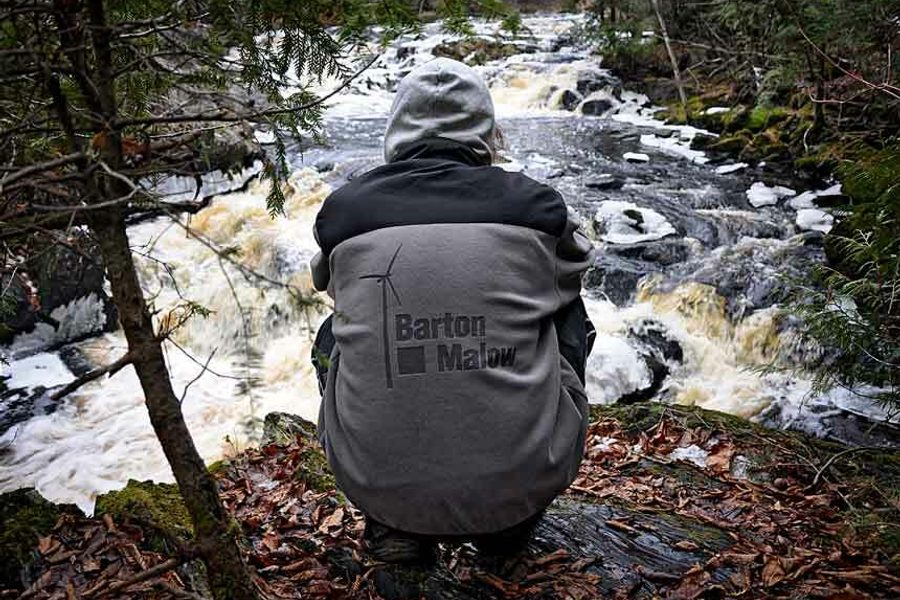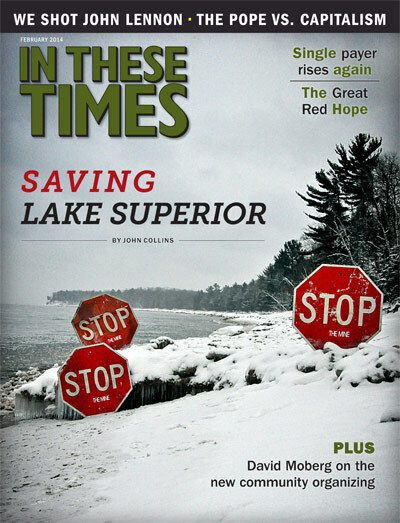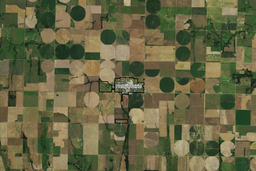
A subterranean labyrinth of iron, copper and nickel wraps its way around Lake Superior, the largest expanse of freshwater on our planet. The labor needed to pull these ancient minerals out of the ground has sustained parts of the rural population around the lake for 150 years. Today, global demand for the remaining deposits is climbing. As an extractive industry drools, environmentalists panic. Lobbyists descend. Lawmakers are introduced to wealthy and ambitious companies. Sparks fly. They engage in unprotected democracy on a mattress of potential money. Laws change. Meanwhile, in the Upper Midwest, a polarized Northwoods waits to see what the baby will look like.
The latest plans by multinational mining corporations are pushing the extractive industry into uncharted territory. The easy stuff is gone and the latest ventures are targeting metallic deposits once deemed economically unviable. The methods aren’t pretty. The proposed mine sites are.
Native Americans are leading the opposition to the new mining projects around the Lake Superior Basin. The Ojibwe’s millennia-old relationship with the natural world doesn’t calculate the region’s resources in terms of profit and loss.
“Our people, just like most people of the Northwoods, are connected to the food-giving, spiritual quality of life that these woods and water bring into our world,” says Mike Wiggins, the 44-year-old chairman of the Bad River Band of Lake Superior Chippewa, one of 11 signatory Ojibwe tribes who make their home around the lake.“This interdependence is unbelievably important. Exploding the headwaters of our home — for 10 to 15 years’ worth of mining jobs and for profits going into a governor’s coffers and a mining-company official’s pocket — is a very, very difficult thing to wrap our minds around.”
Amid growing controversy, the Ojibwe are keeping their feet on the ground,where they’ve always been,along the lake’s southern shore. Their message remains rooted in the long term: These mines threaten our way of life.
Paul DeMain, 58, is a Native journalist and activist, and a member of the Oneida Nation. As he leads a tour through the hills and streams of a recently proposed iron-mining site near the Bad River Reservation in Northern Wisconsin, he says, “If it was going to benefit 100 million poor people in the world, maybe the Bad River Indians and Chippewa in the ceded territory would say, ‘Hey, let’s do it. Let’s feed the whole world.’ But for one company? No. It’s not worth it. Not this water. Not this beauty.”
About a dozen new mines have been proposed around the Superior Basin. The tribes are raising awareness mine-by- mine, while local people on and off the reservations are confronted with their own choice: to embrace more extraction and the jobs that come with it, or to preserve what’s left of the region’s sensitive ecology and protect the water quality of the largest and cleanest of the Great Lakes.
A loveless proposal
Not far from the town of Mellen, Wis., population 716, the Penokee Mountains rise 1,200 feet above Lake Superior. In the winter, they receive an average of 200 inches of snow. In the spring, the runoff feeds a maze of raging streams and tributaries that make up the Bad River watershed — spawning grounds for walleye, trout and prehistoric-looking sturgeon that are longer than you are tall. Sugar maple, oak, ironwood, white birch, pine, medicinal mushrooms and berries of all sorts fill a soggy landscape. Twenty-five miles to the north, where the Bad River meanders into Lake Superior, the Kakagon Slough is home to the largest (and one of the last) coastal wild rice wetlands. The area’s unique, interconnected hydrology has earned it the title “the Everglades of the North.”
To the Ojibwe people, the region is sacred.
“The wild rice beds and wetlands are rooted in our origin. This land is where our ancestors were guided through ceremony and prayer,” says Wiggins. “And I would say that it’s absolutely critical for it to be left alone.”
To Gogebic Taconite (GTac), owned by the Florida-based Cline Resource and Development Company, it’s an opportunity to dig an unprecedentedly large hole in order to liberate nearly 300 million tons of taconite. Taconite— a low-grade iron trapped inside tons of unusable rock — is used to make steel. The Cline Company is new to iron mining and, until recently, was known mainly for its coal mines in West Virginia and Illinois. In 2011, GTac purchased a lease/option for the mineral rights to a 4.5 – by – 22-mile stretch of the Penokees. The company wants to dig a $1.5 billion open-pit mine that would extract billions of tons of rock over the next 35 years. The proposed mine would be the largest development project in the history of Wisconsin.
Chris Cline, a 55-year-old billionaire mining magnate, has recently appeared in the gossip rags thanks to his relationship with former model Elin Nordegrin — Tiger Woods’ ex-wife. Cline is viewed by many in the working-class Northwoods as an out-of-touch businessman, incapable of recognizing what this pristine area means to those who live here. (That he named his 164-foot yacht Mine Games isn’t helping his case.) The Chippewa sobriquet for GTac’s current president, Bill Williams, is “Dollar Bill.” De- Main puts it this way: “When big money comes into the room, spirituality and neighborliness exit.”
And big money has entered the room, politically and globally. Booming construction in India and China has caused metal prices to surge in recent years. Faith in the continued upward trend explains the renewed interest in the Penokee deposits and other cahes of ore around the Lake Superior basin.
GTac’s concept isn’t a new one. Geologists discovered iron in the Penokees in the mid-19th century. Prospectors and speculators have trampled through these hills ever since, and century-old slag piles are still visible. A thousand years before that, the region’s natives were mining small quantities of iron and copper that they traded across North America. But throughout the last century, the majority of industrial-scale iron mining in the Lake Superior Basin has stuck to the west, in Minnesota’s Mesabi Iron Range, and east, in the Upper Peninsula of Michigan.
Very little high-grade natural iron ore remains in the Lake Superior Basin, but iron-bearing taconite exists in a quantity that rivals anywhere else in the world. Northern Minnesota and the Upper Peninsula of Michigan currently account for nearly all domestic taconite production.
The iron deposit in the Penokee Mountains, known as the Gogebic formation, has managed to stay un-mined largely because millions of years ago a tectonic event shifted it vertically. Unlike the closerto- the-surface deposits in Minnesota and Michigan, this one slants 65 degrees into the earth, making it harder to remove. Where there’s a well-funded desire, extraction is possible, but it’s an engineering migraine — the further down one mines, the more waste rock must be removed before the valuable rock is reached. If the proposed GTac project in the Penokees gets the green light, by the end of the first phase of production — 35 years from now — the pit will be four miles long, a half-mile wide and 1000 feet deep — the longest, widest and deepest open-pit mine in the world.
The process
Open-pit taconite mining is a marvel of human engineering, employing a destructive ambition seldom matched in the animal kingdom. To see anything close, you would have to give a wolverine an operating license and access to dynamite, then trick it into thinking there was a lifetime supply of meat 1,000 feet underground.
The first step involves the removal of what the mining industry euphemistically calls “overburden” — animal life, trees, ponds, streams and any non-ferrous rock that rest on top of the targeted ore deposit. Explosives are lowered into 40-foot-deep holes and detonated to break the earth into manageable chunks. The waste rock is piled nearby. Any rock containing taconite is trucked to its first stage of processing, where a primary crusher pulverizes the chunks of iron-bearing rock. The smaller pieces are then conveyed into a secondary crusher, which grinds the rock into a powder-like consistency. Powerful magnets separate the iron (taconite concentrate) from the tailings (more worthless rock). The stuff is shaped into marble-sized balls, heated to 2,400 degrees Fahrenheit, cooled, and then sent by rail and ore boat to steel mills.
Given the industry’s inevitable environmental impact, obtaining the necessary state, local and federal permits for an open-pit mine is expensive and time-consuming. Luckily for GTac, the company has a friend in Wisconsin Gov. Scott Walker ®. Walker’s administration maintains that the mine will bring much-needed jobs to a region experiencing unemployment as high as 13.2 percent in Iron County. According to a report produced by consulting firm NorthStar Economics, the Penokee mine would employ about 700 people with relatively well-paying jobs (the report puts the average salary at around $83,000), as well as providing additional jobs in Milwaukee and Rhinelander, where mining equipment is manufactured. In March 2013, Walker signed a ferrous-mining bill that eased the way for GTac’s plans in the Penokees by capping the amount of time and money the mining company must invest in environmental impact statements.
The bill also limits community involvement in the permitting process and accepts collateral damage to wetlands as inevitable by allowing streams and ponds (up to two miles long or two acres wide, respectively) to be filled with displaced waste rock. GTac had a hand in writing the bill. Before that, Cline and a colleague contributed $10,000 to Walker’s campaign and thousands more to state assembly and senate members who support GTac’s agenda.
“This company cannot be trusted. They are buying laws,” says Pete Rasmussen, a resident of Marengo, Wis., and the vice president of the Penokee Hills Education Project (PHEP), a group established to educate the public about the risks the mine would pose to the Bad River watershed.
The PHEP has experienced firsthand GTac’s pull with legislators. Last spring, when the company began drilling preliminary core samples for mineral testing, the PHEP was delineating wetlands near the proposed mine site. In response, Rasmussen says, a GTac lawyer drafted a letter saying the company would press charges against anyone found delineating wetlands near the site. The PHEP took that letter to the local district attorney, who assured the group that it was doing nothing illegal. But GTac went back to the state legislature, and in November 2013, the Republican-controlled Wisconsin Senate passed a bill that limits public access around the GTac site by establishing a 600-foot perimeter on either side of the roads to and around the site. At the same time, the bill exempts the company from paying the taxes that any other landowner would have to pay if they restricted public access. The lawmakers responsible insist the measure is designed to protect the job-creating company from “eco-terrorists.”
Even with the streamlined process, GTac has a few more hurdles to clear. The company has petitioned the Wisconsin Department of Natural Resources for a bulk-sampling permit in order to extract 2,400 tons of earth for further testing. If the company is satisfied with the findings, the final permitting step requires GTac to disclose a pre-application notification. This extensive document would include a comprehensive plan of the proposed mine and would specify how the company plans to address environmental concerns regarding surface and groundwater pollution, endangered species and the destruction of wetlands. Perhaps most importantly, GTac would be obligated to outline its reclamation plan — the reshaping of the land after its profitability has been exhausted (turning the massive mining pit into another lake is one possibility, an option some locals have taken to calling “Lake Inferior.” (“No thank you,” says Paul Demain, “we don’t really need another lake.”)
Then, if the plan is approved, mining can begin.
Treaties that bind
When the Ojibwe ceded this territory to the U.S. government in the mid-19th century, they legally protected their way of life for future generations by retaining what are known as “usufructuary rights” — the right to hunt, fish and gather on the land in perpetuity. Three treaties (signed in 1837, 1842 and 1854) remain binding contracts between the tribes and the federal government. In no uncertain terms, tribal leaders view any large-scale threat to the land and water as an existential threat to tribal sovereignty — and, ultimately, to life itself.
The sacred nature of wild rice, manoomin (the good seed), is an integral part of the Ojibwe’s ancient history. The Lake Superior Chippewa believe their ancestors were spiritually guided west to the place where “food grows on the water” — the southern shore of Lake Superior. Wild rice, which is sensitive to both water level and quality, remains central to the tribe’s identity. And for the Lake Superior Chippewa, protecting that wild rice is viewed as a sacred responsibility to both ancestors and future generations.
“This form of mining — its potential to pollute waters and waterways and change the hydrology of the system— threatens the ways of life that have been protected and passed down for generations on the reservation,” says Cyrus Hester, a 32-year-old European American and a veteran of the wars in Iraq and Afghanistan who works as the environmental specialist for the Natural Resources Department of the Bad River Band.
The threat mining poses to water quality is verifiable. In Minnesota, elevated levels of sulfate, selenium, manganese, mercury and other contaminants in water and air samples have cost mining companies hundreds of thousands of dollars in environmental fines since 2004.
Once displaced rock is exposed to air and water, whatever minerals are in that rock eventually make their way into the water if not properly contained. These pollutants accumulate in streams and rivers over time and work their way through the food chain. That means the methods used to dispose of waste rock — and what, exactly, is in that rock — are critically important. GTac has said that it will use the “dry stacking” method to dispose of the tailings left over from the taconite processing: essentially creating a giant, contained pile of the finely processed rock, as opposed to the more common method of mixing tailings with water and holding the resulting slurry in a pond.
Dry stacking of tailings is the more expensive method, and theoretically carries a lower risk of water contamination. Even so, the sheer quantity of waste rock and tailings that would be generated by the mine would make controlling the piles an extremely complex task, and GTac has so far given little indication of how exactly it would be accomplished.
In areas with high precipitation and snowfall, the stacks would require seasonal management to assure their structural integrity and to contain any lowvolume but highly concentrated seepage that can occur within the piles. Any sediment that escapes not only poses a pollution hazard, but threatens to disrupt the area’s hydrology by clogging up streams and tributaries.
A coalition consisting of tribes, businesses and concerned citizens from the three states that border Lake Superior has requested that the EPA begin a comprehensive study in 2014 to better understand how expanded mining around Lake Superior will affect the ecosystem’s biology. In particular, further study is needed of the rock surrounding the iron deposit to determine which potential pollutants, and how much of them, would end up in the waste rock and tailings from the GTac mine.
One concern is the presence of pyrite— an iron sulfide — in both the Tyler Formation, which overlies the iron ore deposit, and in the deposit itself. The environmental hazards of exposing iron sulfides to air during mining are well-known from another form of Lake Superior Basin ore extraction: sulfide mines. When iron sulfide meets air, a chemical reaction occurs that results in sulfuric acid. If pyrite ends up in GTac’s tailing and waste rock piles, and those piles are not absolutely secured, the sulfuric acid generated could in turn be swept away by heavy rain and snow melt into the surrounding water system. Should that acid make its way into surface or groundwater, the pollution lasts for decades.
Further complicating matters, asbestos was recently discovered on one of the sites GTac proposed for bulk sampling. This creates an occupational hazard for those who would be processing the taconite — exposure to the carcinogenic mineral markedly increases the likelihood of developing cancer — and could be detrimental to air and surfacewater quality.
While the track record of taconite mines in the region isn’t reassuring, neither is the Cline Company’s lack of experience when it comes to iron mining. Furthermore, GTac president Bill Williams is currently facing a criminal investigation in Spain for his work, prior to being hired by GTac, as director of the Cobre Las Cruces copper mine in Seville province, which has been accused of contaminating a local aquifer with arsenic. (Williams has reportedly stated that the environmental issues occurred after he left the company.) GTac did not respond to requests for comment for this story.
An ounce of prevention
Wisconsin’s Penokee iron mine can still be stopped in its tracks. The 11 bands that make up the Lake Superior Chippewa are relying on science and community awareness to make their case.
Wiggins, the Bad River tribal chairman, calls GTac’s proposed mine “a blind push towards a catastrophic horizon.” But he sees another future for northern Wisconsin. “State legislators could craft the repeal to what was essentially a corporate, corruption-driven piece of legislation.” he says. “We could go back to the mining law Wisconsin had on the books, which was thorough … it had integrity.”
But the chances of the Republican controlled legislature repealing the law are unlikely. Depending on the risk posed to their treaty-protected resources, the Lake Superior Chippewa could take their case to Washington. President Obama could fulfill a treaty obligation by declaring the area unminable due to its proximity to their sovereign nation. The Lake Superior Chippewa have not yet drafted such a request, but they are in talks with the Department of the Interior.
Tribal sovereignty and the federally protected right to hunt, fish and gather on the land and water make the Chippewa voice on the mining issue the loudest in the region. But the proposed GTac mine would also affect communities off the reservations. Much of Iron County, Wis., gets its drinking water from aquifers directly connected to the Penokees. For mining companies, paying the fines for the environmental damage their mines cause is a calculated business expense. For the natives, protecting Lake Superior transcends the political economy. In the Ojibwe culture, water is sacred — the maternal counterpart to paternal fire.
“As physical manifestations we are — me and anybody reading this— 70 percent water. When you think about that and then look at the potentially devastating impacts this mining project could have on surface water and water under the earth, you start talking about toxification of people,” says Wiggins. “Bad River people aren’t random water, just like anybody reading this isn’t random water. People in Chicago are comprised of 70 percent of whatever water they’re drinking. That might be from the municipal supply or it might be Perrier or something like that. Up in Bad River, most of the tribal members walking around are Penokee Mountain-groundwateraquifer water.”
Treaties, guns and maple syrup
East of Mellen, just off Highway 77, on the right-hand side of Moore Park Road — the unpaved road leading up to the proposed mine site — a cluster of tents, tarped wigwams and campfire pits can be seen through the trees. A row of Chippewa tribal flags marks the entrance into the Lac Courte Oreilles Harvest Educational Learning Project, formerly known as the Harvest and Education Camp.
Initially established to exercise the tribes’ treaty-protected rights, the camp has grown into a community-oriented effort to demonstrate the abundance of natural resources the GTac mine would threaten or obliterate. Last spring and summer, more than 3,000 people from as far away as Spain, Scotland and Maui visited the camp. Before the snow started falling, tribal members, visiting geologists and conservation groups led tours of the proposed site and surrounding landscape.
The Lac Courte Oreilles have been exercising their treaty-guaranteed right to camp and harvest on the land, but have kept their opposition quiet and low-key. That calm was broken last June when a group of activists hiked through the mine site and began shouting at the GTac employees who were in the process of drilling core samples. During the exchange, an altercation took place and one of the hikers grabbed an employee’s cell phone. She was arrested and charged with a class E felony. In response, GTac hired a private security firm from Arizona — Bulletproof Securities — and a small army of mercenaries wearing full camouflage fatigues, their faces hidden by ski masks, were soon patrolling the Penokees with semi-automatic assault rifles. Aside from scaring the hell out of the quiet town of Mellen, nothing much happened. The elite unit stared at birch trees for a week or so, until they left in July after state Sen. Bob Jauch pointed out that they weren’t licensed to operate in the state.
Much of what’s going on at the camp is research-oriented. According to Paul DeMain, who is the spokesperson for the camp, more than 900 harvestable plants have been catalogued by scientists from regional universities. Tribal members like DeMain are certain that harvesting forest products could become part of a more environmentally sustainable economy.
“Part of what we’re trying to show by being here is that there can be an alternative economy in all of this,” says DeMain, whose Native ancestors have been active in Northern Wisconsin politics for more than 400 years. “In 1880 they took 248,000 pounds of maple sugar out of Ontonagon and Ironwood, Mich., and shipped it out east. Nowadays it’s going at $22 dollars a pound. You got a calculator? That’s 5.4 million dollars at today’s value. My great-great-grandmother took 1,000 pounds of sugar out of these woods here in the springof 1862 — got paid 16 cents a pound. We want to backtrack with those numbers and look at what we have.”
Finding more sustainable sources of income right here in the Penokees could help the tribes, and the region, more effectively combat the perceived economic importance of the estimated 700 jobs the mine will provide. Extractive employment is inherently temporary— when the deposit goes, so do the jobs. Exhausted mines all over the country have left behind ghost towns and legions of bitter unemployed workers. Harvesting resources that are abundant and renewable might be the answer to an otherwise boom-and-bust economic model.
The future remains uncertain, but the Lake Superior Chippewa have no intention of allowing GTac to threaten the land, water and wild rice that they hold far above the ebb and flow of any political or corporate agenda.
DeMain’s tour comes to an end on the western edge of the proposed mine site at the Tyler Forks rapids — a churning, root-beer-colored froth of fast moving water. As he does every time he visits, he sprinkles some tobacco into the river, a sign of respect to the water. He turns towards what would be the edge of the proposed mine, and continues speaking to the group.
He says that someday the iron in the Penokees might need to come out of the ground. But there just better be a damn good reason. If there was, he says, the Lake Superior tribal elders would support it. “But to give up the wild rice by accident,” he says, “you know, if a slurry of acid-tailing runoff or whatever hits it? Not for Chris Cline. Does he really need the money?”
Tribal elders in the Ojibwe community insist this mine will not come to pass. And there is no shortage of tribal members committed to making certain it doesn’t.
“This mine can’t happen,” says DeMain. “We have a lot of warriors in our community who stood up and went to Vietnam and everywhere else. They haven’t been asked to enter this fray yet. They’ll be here if the time comes.”
In the next issue of In These Times, John Collins will report on how the Lake Superior Chippewa and their European- American allies are confronting sulfide mining to the east of the Penokees, in Michigan’s Upper Peninsula.









